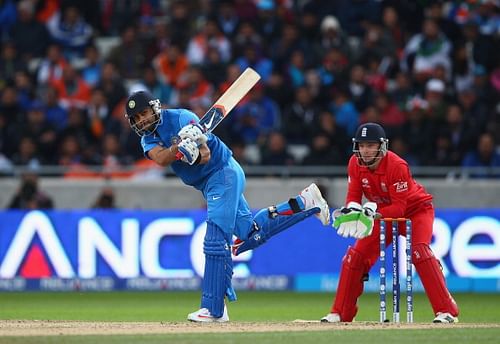
Endangered bowlers face the prospect of extinction

Boundaries are becoming increasingly easier to hit
Cricket needs a conservatory, and soon. The recently concluded one-day series served as the perfect argument for the need to preserve. It is about time for the men running the game to step in and act to prevent complete ruin. In deciding to alter the rules of the game to satiate the greed for instant gains, cricket is choosing to kill the proverbial golden goose instead of collecting the daily egg. It is no wonder then that bowlers have been reduced virtually to an appendage that serves to feed the lusty batsmen the ammunition needed for their brutal blows.
The gentleman’s game was designed to be beautiful, expressive and exciting; it was intended to be intuitive and insightful. But it was never meant to be savage. It was always a game that could turn in a moment – a probing delivery that undid a well set batsman, a measured response by a batsman that helped reconstructed an innings from the rubble or a fielder’s inspired act of athleticism to upend a batsman. At the same time, it was also a game designed to play out over a prolonged period of time.
That was how cricket was meant to be – collective success built on coherent works of individual brilliance with the bat, ball and in the field.
Unfortunately today, cricket is no more than a drumfest that relies on a relentless hammering of the ball to all parts of the ground. Often fielders are stuck in unwieldy places, forced to remain within their brief ambit, governed by some ridiculously one-sided restrictions. This has resulted in a free rein for the batsmen, who are willing swing at everything without a care in the world.
The maximum has always provided erotic relief to both player and spectator. The ball sailing over the rope held a romantic charm that momentarily elevated the striker into an exalted position. Even as the bowler stood with his hands on the hip, desperately trying to be stoic in expression – spectators burst into an orgasmic bout of delirious cheers. It was a warm contrast in emotions that layered cricket and made it meaningful, for it was a release that came only in rare moments of congruence between the eyes, limbs and the willow, which served as an extension of the arms.
The advent of T20 and the progressive dilution of rules to facilitate attacking cricket have rendered the bowler into a necessary prop with limited control over the flow of the game. Not that it is anything new for a batsman to strike a hearty blow to send the ball soaring into the stands. It’s just that earlier, it was a spontaneous act of aggressive expression without the aid of contrived rules that kept spaces vacant for the batsman. Professional sport cannot resort to exhibitionism to pander to its dumbed down audiences.
Right from the days of the legendary C. K. Nayudu, who was known to be a belligerent batsman with a penchant for clearing the ropes, the sixer held a certain charm. It was an expression that signified exuberance and freedom for the batsman, even as the bowler suffered a moment of indignant silence. But it was an event that drew ample attention considering that it was a rousing play with a stunning impact, even if it was far too sporadic.
Contemporary cricket though has witnessed an explosive increase in runs scored off boundaries, on the back of an evolving style that emphasises the role of the batsman in bold type. The sixer has a special relevance in cricket – those who witnessed the mauling of Eddie Hemmings at the hands of Kapil Dev will remember the run of play, not just for the runs scored, but also for the context and manner in which they were attained.
It was a test in which Kapil Dev, fast running out of partners, resorted to a brutal assault that ameliorated the souls of several Indian fans around the world. Responding to England’s 653-4 (decl), India had slipped to 430-9 despite centuries from Ravi Shastri and Mohammed Azharudin. With Narendra Hirwani – for many an automatic choice into the club of scurrying rabbits – at the other end, Kapil knew he lacked the luxury of time to prevent a follow-on.
What followed was an assault that stirred a nation out of its stupor. After fending off the first two deliveries, Kapil took matters into his own belligerent hands. The great all-rounder stepped out to launch Hemmings into the stands four times in a row and wiped away the 24 needed to make England bat again. Another similarly emancipating strike, albeit for Pakistani fans – was the sixer off a full toss from Chetan Sharma off the last ball of their innings to defeat India and seal an important victory.